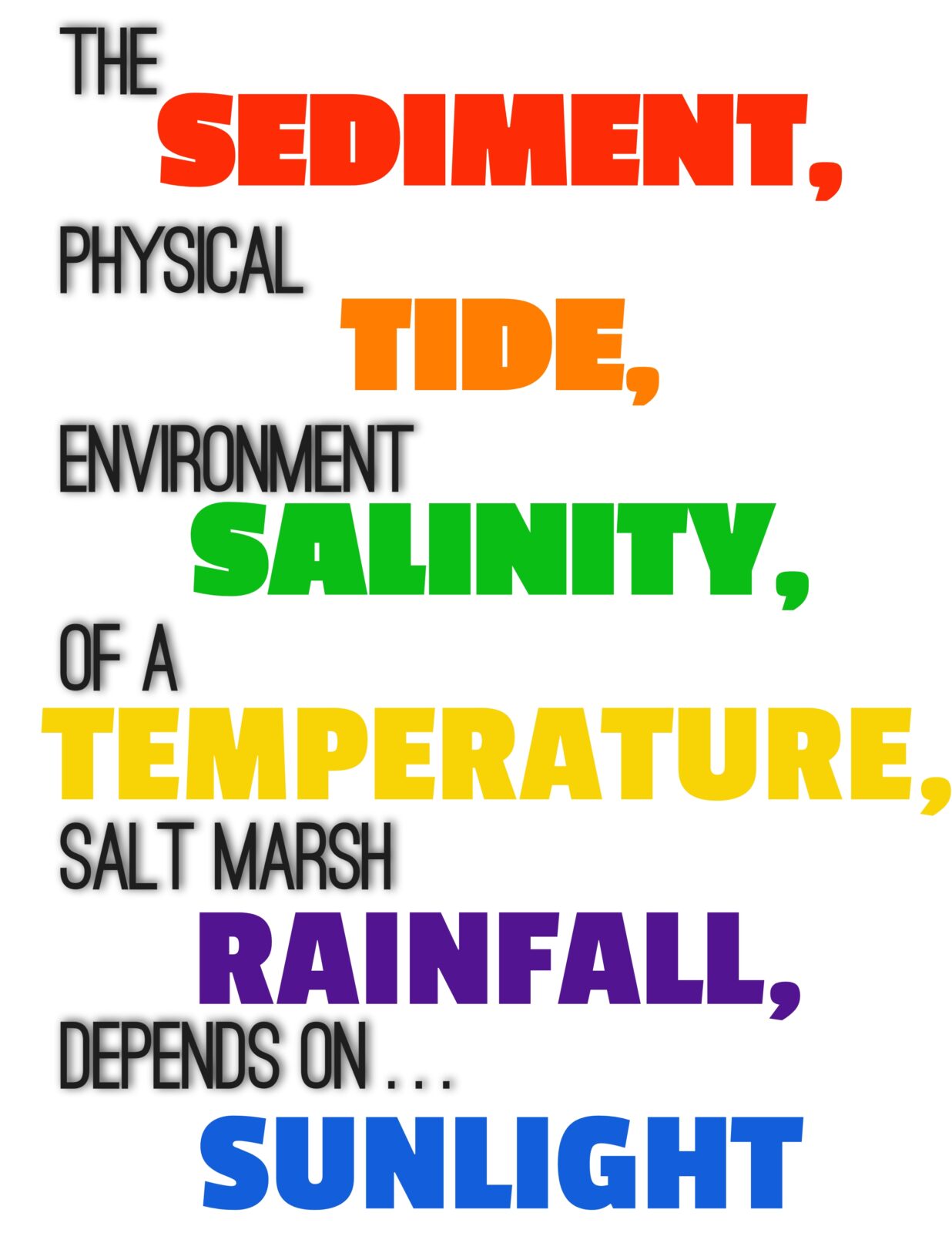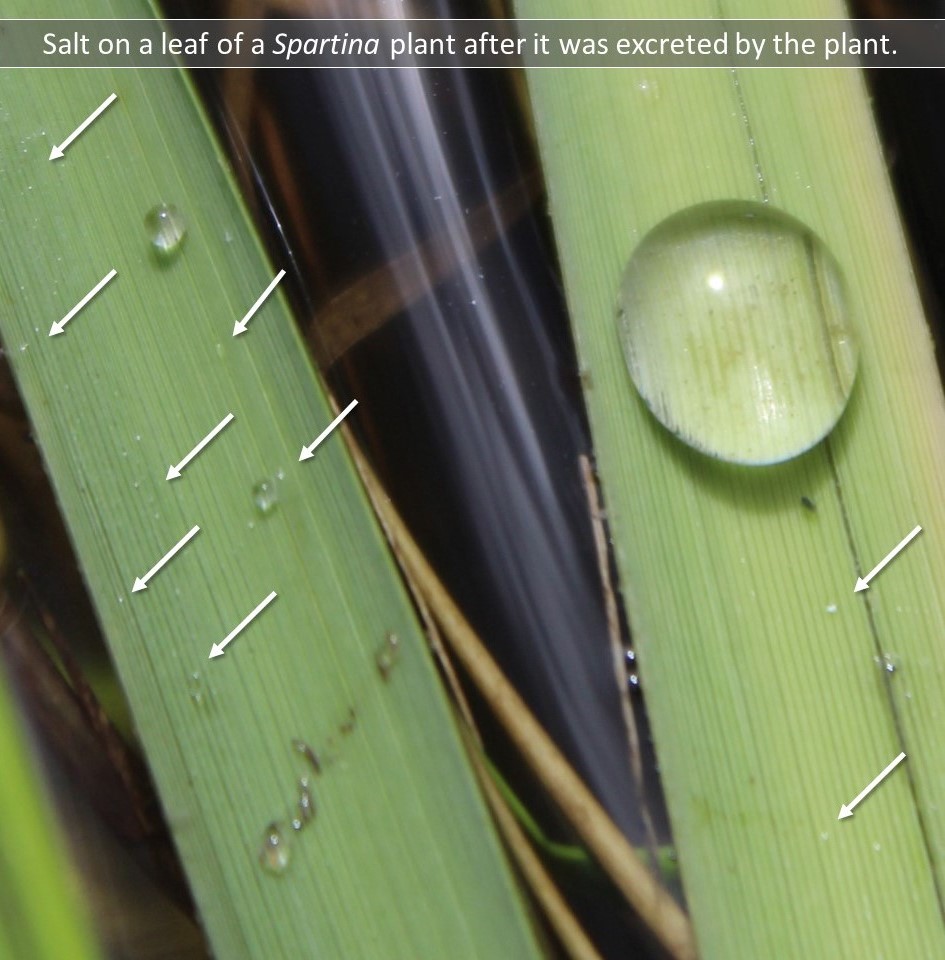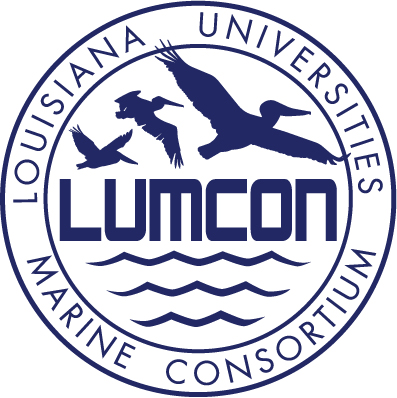Salt marshes are generally flat lands located on the coast in estuaries, on the backsides of barrier islands, and on river deltas that are flooded daily by tides. To be called a salt marsh an area of land needs to have the hydrology, biology, and hydric soils that define a wetland. Do you remember this from Level #1?

The Physical Environment of a Salt Marsh
Salt marshes are very big areas of low, flat, poorly drained land. Salt marshes have deep muddy soil (sand, silt, and clay) with a large amount of decomposing (rotting) plant material. The muddy sediments of a salt marsh are often referred to as “pluff mud” which certainly describes the sediments very well.
Salt marshes are what we can tidal. This means they flood with water brought in by the tidal during high tide. At low tide, water is drained from the marsh. Tides are an important event in salt marshes because high tides deliver nutrients, water, and a bit of sediment.
Below we will be taking a closer look at salt marshes from a biological standpoint. The reason for bringing this up now is because the biggest element of the physical environment that living things have to deal with is the amount of salt. This doesn’t make any of the other physical aspects any less important but salt is almost always the biggest reason for what life we encounter in salt marshes.
The Biology of a Salt Marsh
Life in a salt marsh is complex and comes with many challenges but still, many plants, microbes, invertebrates, fishes, crabs, birds, and mammals call them home. Each organism must be adapted to live in an environment with salt and a constantly changing environment. Despite these harsh conditions, salt marshes serve as the primary habitat for plant and animal life. Because of that salt marshes are one of the most diverse and productive ecosystems on Earth.
At first glance, a salt marsh can appear to be just a big flat area with one kind of plant everywhere, like we see in a corn or sugar cane field. But after taking a closer look we can certainly see differences from one place to another in the marsh. For instance, the plants found on the edge must be able to survive high amounts of salt and water. Flooding can often submerge plants on the edge for an extended amount of time limiting their access to sunlight. Being on the edge often means they have to deal with currents from tides or other events that can cause high fast-moving water. The alternative is being located more inland. Plants that are located away from the edge can experience dry, low-nutrient conditions.
Some animals live in the ecosystem permanently, while others come and go seasonally or at different points to complete their lifecycles. At any time you can find hundreds of invertebrates like fiddler crabs, snails, mussels, and worms thriving in the sediments and/or on the plants. Small invertebrates, like the periwinkle snail, graze directly on sediments and cord grass stems for algae, fungus, and microorganisms. Fishes, shrimp, and swimming crabs also can be found throughout the year. These animals come into the salt marsh looking for food, to find mates, or just to find shelter. Large fish, like adult red drums, hunt in the deeper water preying on shrimp, crabs, and small fish. The salt marsh also provides important resources to birds and mammals. Ducks, wading birds, hawks, other shore birds, and small songbirds use the marsh as a place to feed on small invertebrates, insects, and seeds. The Clapper Rail will even build nests high up in the grasses safely out of the way of high tide. It is very common to see terns and osprey dive for fish visible in the shallow water, while shorebirds like the sandpiper patrol mud flats at low tide for small snails and worms. We can not avoid talking about the reptiles of the salt marsh ecosystem. The diamondback terrapin is an aquatic turtle that lives in brackish water. Terrapins move into the marsh during high tide to feed on periwinkle snails, crabs, and small mussels and clams. Alligators can often be seen too. They prefer areas that have low salt but can be seen in the marsh when salt levels are low.
In the salt marsh plants and animals are often found in different zones that best suit their needs and where they are most likely to survive. Studies have found that in areas where there is a bit higher elevation plants have more competition for nutrients and sunlight. On the other hand, plants that occupy areas with a lower elevation are constantly trying to stay alive despite exposure to salt and flooding.

The plant species that live in salt marshes are grasses, sedges, and rushes that form thick root mats. Salt marsh plants are halophytic which means they can live in salty habitats where they come in contact with salt water through their roots or salt spray from wave action. It is thought that only about 2% of the plants on Earth are halophytic. Halophytic plants survive by either tolerating salt or avoiding it the best they can. Plants that avoid salt usually don’t live that long and are only “active” during times of the year that have a lot of rainfall. This means they go through the majority of their life cycle when salt levels in the soil are at their lowest. Salt marsh plants that tolerate salt, instead of trying to avoid it, have developed ways to get rid of or store salt to maintain a healthy amount of salt in their bodies. Some plants have salt glands in their leaves to get rid of salt that builds up in their bodies. You can often see the salt build up on the leaves of plants like in the photo to the left. Other plants have salt bladders located in their leaves where they can store salt. When the salt bladders are full the leaves die and drop off protecting the plant from unhealthy levels of salt.
Animals have many different adaptations for living in saltwater environments. Fishes that live in salt water get rid of salt through the gills and kidneys. Birds will get rid of excess salt through their nostrils. You have seen this if you have ever noticed water dripping from a seabird’s beak. Turtles have glands that basically function the same way but in their EYES! No matter what strategy an animal uses it is essential that they have a healthy level of salt in their bodies or they die.
So now that we know a little bit about how life can happen in a saltwater environment let’s spend some time on how living things interact with each other and the non-living parts of their environment. Let’s look at a simple, although common food web where the physical environment and the living things interact. Each day the tide comes in flooding the marsh. The high water means that blue crabs can get into the marsh where they can’t at low tide. The blue crabs can then feed on the periwinkle snails that climb up the stalks of marsh grass. Good for them! But does it come at a cost? Sure it does, but since the blue crabs are not sitting on the bottom of a deeper water creek or bayou, wading birds and fishes like red drum can catch and eat the blue crabs.

